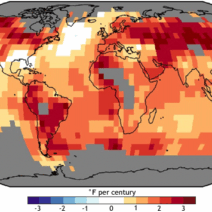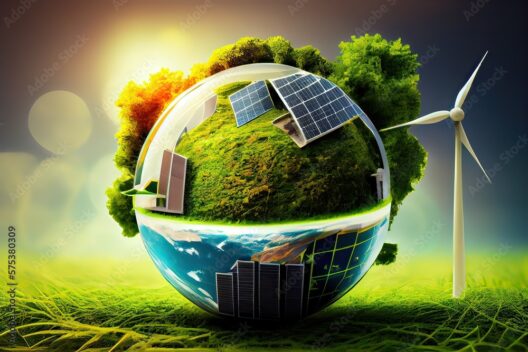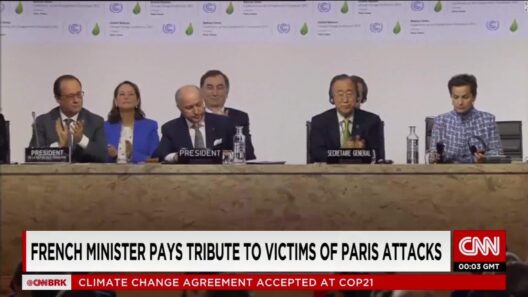Energy conservation has become a focal point of global discourse, particularly in the face of climate change, resource depletion, and soaring energy costs. Governments worldwide recognize the importance of implementing laws and policies aimed at promoting energy conservation. However, there is a complexity in how these laws manifest across different nations. A breakdown of global energy conservation policies can reveal not only countries’ various approaches but also the underlying motivations driving this crucial agenda.
To begin with, it is incumbent upon us to acknowledge that energy conservation policies do not arise in a vacuum. Various factors—economic, environmental, technological, and social—intertwine to shape the legislative landscape. For instance, countries with abundant fossil fuel resources tend to exhibit less urgency in energy conservation than those that rely on imports. This disparity can be traced to the availability of resources, but deeper factors such as international commitments and public awareness also play a pivotal role.
In the European Union (EU), a comprehensive framework for energy conservation has been established, aiming to reduce greenhouse gas emissions, increase energy efficiency, and promote renewable energy sources. The EU’s Energy Efficiency Directive obligates member states to implement measures that will ensure a 32.5% increase in energy efficiency by 2030. This directive manifests practical standards and legally binding measures in sectors like buildings, transportation, and industry. Such ambitious targets showcase the EU’s commitment, pressing member states to rethink their energy consumption and ultimately transition towards a greener economy.
Across the Atlantic, the United States presents a contrasting scenario. Energy conservation laws often rely on state-level initiatives, as the federal government has taken a more relaxed stance historically. However, the energy crisis of the 1970s sparked a rush towards energy efficiency regulations, culminating in the establishment of initiatives such as the Energy Policy Act of 2005 and more recently, the Energy Independence and Security Act of 2007. These laws underscore a commitment to improve energy efficiency across residential and commercial buildings, as well as mandating stringent efficiency standards for appliances and lighting.
Even so, the efficacy of energy conservation policies in the U.S. is often hampered by political variability and varying state priorities. In some states like California, ambitious energy efficiency standards have made headway in reducing consumption. Conversely, states with less regulatory oversight continue to grapple with inefficiencies, highlighting a patchwork approach that ultimately complicates nationwide efforts.
In Asia, countries are also taking remarkable steps toward enhancing energy conservation. Japan, for instance, enforces the Act on the Rational Use of Energy, which mandates energy-saving measures in commercial and industrial sectors. Following the Fukushima disaster, the Japanese government emphasized the importance of reducing reliance on nuclear energy and pursued more stringent energy conservation practices. Consequently, initiatives were launched to encourage the adoption of energy-efficient technologies and renewable energy, reflecting a shift in policy driven by both environmental and safety concerns.
China stands out with its comprehensive approach to energy conservation, seeking to balance rapid industrial growth with sustainability. The Chinese government has implemented numerous policies aimed at capping energy consumption and promoting cleaner alternatives. The Energy Conservation Law of 1997 introduced a legal framework that encourages enterprises to adopt energy efficiency measures and invest in renewable technologies. The updated version in 2019 intensified these goals, mandating stricter energy savings targets in line with the nation’s long-term environmental objectives.
Despite these advancements, challenges remain. One significant hurdle is the enforcement of existing laws. Often, regulatory frameworks lack robust mechanisms for ensuring compliance, leading to a gap between policy intentions and real-world outcomes. Additionally, public awareness and engagement are crucial for the success of energy conservation laws. In many regions, there is a need for enhanced education around the necessity and benefits of energy conservation.
Exploring the legislative framework of energy conservation policies also unveils the role of international cooperation. Initiatives such as the Paris Agreement signify a collective commitment to tackling climate change, with countries pledging to take proactive steps towards emissions reductions. This collaborative approach fosters a global dialogue that not only influences national policies but also encourages the sharing of innovative technologies and strategies among nations.
Moreover, the proliferation of technology has transformed the landscape of energy conservation, enabling the integration of smart technologies that optimize energy use. Legislative frameworks are increasingly incorporating provisions to facilitate the adoption of advanced energy management systems, smart grids, and Internet of Things (IoT) applications. As a result, it becomes evident that energy conservation laws are evolving to accommodate a rapidly changing technological environment.
The need for energy conservation laws transcends mere regulatory compliance; it encompasses a broader ethical obligation to protect our environment for future generations. While legislative measures serve as essential instruments for change, grassroots movements will continue to galvanize support for comprehensive policies that prioritize sustainability. Indeed, the mutual interplay between legislation, technology, and public consciousness can catalyze profound societal shifts toward energy conservation.
In conclusion, the tapestry of energy conservation laws globally is intricate and multifaceted. Through examining these policies, one can surmise that the commitment to energy conservation arises not only from necessity but also from an increasing realization of its imperative nature for a sustainable future. As nations continue to navigate the delicate balance between energy consumption and conservation, it is clear that an integrated approach—addressing legal, technological, and societal dimensions—will be fundamental in achieving enduring success in global energy conservation efforts.








